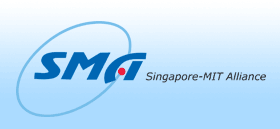Project Abstract:
Nanostructures, e.g. nano-pillars, tips array, micro-cantilever arrays,
and micro-channel arrays, are very useful for biomedical use, such
as cell adhesion, molecule separation and purification, and
molecular detection. Particularly for arrays of nanometric sized
pillars, inhibit cell attachment, and this will lead to important
medical applications. The nano-pillars can be fabricated by several
methods till now, such as conventional photolithography pattering
and reactive ion etching transferring, and laser achromatic
interferometric lithography, and then replicated by means of microcontact
imprinting, embossing, etc. However, theses methods are
all need two or more steps for formation of the nanostructure.
Compared with them, focused ion beam direct milling (FIBM) is
only one step to transfer the designed pattern into substrate.
Moreover, the pillars are perpendicular with the substrate (the angle
of pillar axis to substrate surface is 90¡„). The angle is determined
by the crystal orientation of the substrate material during the process
of dry or wet etching, and cannot be changed randomly according
to practical requirements. If the angle can be changed randomly,
design freedom of the nanostructure will be enlarged. It will be
more helpful to cellular engineering. The FIBM is isotropic process,
and limitation free of the crystal orientation. Different angles of the
pillars can be obtained by use of the FIBM. Fabrication process of
the FIBM investigated in detail in this project.
|


